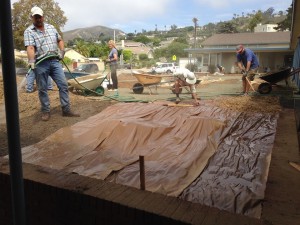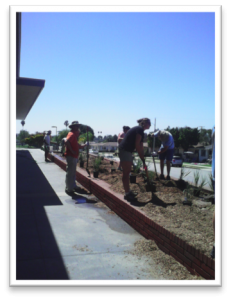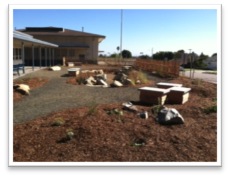This last Saturday, September 6th, was the final work day at Loma Vista School on the Coastal California Native Garden. Loma Vista was this year’s school chosen for the Midtown Ventura Community Council Adopt-A-School Program and it was the biggest project done yet. Landscape architect and G3, Green Gardens Group, Associate Brian Brodersen, along with designer and G3 associate Laura Bauer created the design. The design called for turning the warm-season turf grass in front of (west) and adjacent (south) to the Administration building into a beautiful, 100% native landscape that directs rainwater from School roofs and sidewalks into the garden. All plants were provided by Matilija Nursery.
A number of workdays took place over a four-month period. Many Volunteers, from Midtown Council, City of Ventura, Surfriders Ocean Friendly Gardens Program and the school, came out on several Saturdays throughout the months. Schools principal Marlene McMullen was there every step of the way. Removal of turf grass and excavation of swales and mounding of berms were done prior to the workdays. Volunteers helped remove the excess roots and grass that came through after excavation, with sheet mulching the planting areas and building wire cages for gabion benches among many other things. On planting day, 40 people came out to help plant over 200 plants. Brian and Laura placed all the plants on their intended spots. Renee Roth, a Qualified Trainer with G3, and a City of Ventura employee, demonstrated proper planting technique, the G3 way, and Compost tea, donated by Ventura Coop, was applied to all plants. MVCC board members, David Ferrin, also G3 Certified, and Dan Long, put in lots of labor and offered specialized skills. This project, though at first daunting and time consuming, came together in a great way and converted a warm season grass landscape into a beautiful native habitat that will capture The First Flush and several gallons of rain water that comes off the schools roofs and sidewalks. This project will eventually need little to no irrigation when its native coastal plants are well established in their new homes and will create habitat for local birds and bees and insects. There will be many learning opportunities ahead for school students parents and teachers!




